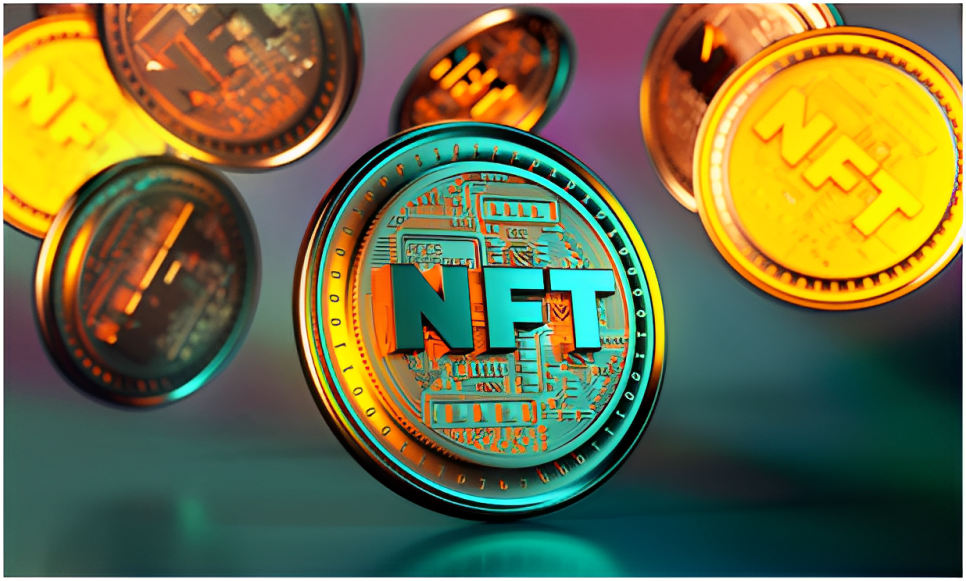
Software, Application
What Are NFTs and How Do NFT Marketplaces Work?
NFTs have completely changed how people purchase, sell, and trade digital assets, and they have swept the globe. NFT marketplaces, let you possess a one-of-a-kind piece of digital content that is verifiably original and cannot be replicated, ranging from distinctive digital artworks and music to collector sports cards and virtual real estate.
But where can you find these unique digital assets to buy and sell?
NFT marketplaces have a role in this. These online marketplaces let producers display and sell their NFTs while letting customers safely buy these special digital commodities.
But why is the NFT market a business opportunity that attracts growth?
What benefits might the digital world expect from non-fungible tokens?
Well, we are going to answer those questions soon. This blog post shall walk you through the below-mentioned pointers.
What Are NFT Marketplaces?
NFTs are cryptographic tokens that serve as digital certificates proving the exclusivity of digital entities, as well as of real estate, works of art, other collectibles, and even individuals.
The ownership and legitimacy of NFTs are verified by a blockchain, a decentralized digital database that makes it hard to copy or counterfeit.
Each NFT is unique and cannot be traded for another NFT at a predetermined rate, in contrast to fungible tokens like bitcoins.
For example, 1 USD can be replaced with another 1 USD. Also, 1 unit of bitcoin equals 1 unit of bitcoin, which is not the case with non-fungible tokens.

What are the Properties of NFTs?
The significant properties of NFTs that intrigue crypto enthusiasts are:
1. Uniqueness
Corporations, content creators, and artists are severely limited in their ability to use the digital environment. In this circumstance, NFTs might be useful.
If a piece of art is turned into an NFT, the blockchain ensures its originality. In a contrast to fungible assets, NFTs are distinct assets.
Regardless of how frequently the artwork appears on other online platforms, the NFT established by the original artist determines whether the piece is unique or not.
2. Indivisibility
To be shared, an NFT must be transferred in its whole. Before buying the asset, the future owner may ascertain if the NFT can be verified and exists as a single unit.
It certifies ownership despite the fact that NFTs lack liquidity.
3. Authenticity
Provenance is the documented chain of ownership that dates back over time for a given thing or item. The provenance of NFTs makes it straightforward to confirm their legitimacy.
Because NFTs are based on a blockchain, anyone can track their historical movement wherever they go.
The main method for tracking an NFT’s previous activity is to use blockchain scanners like Etherscan, Polygonscan, and Solscan.
4. Portability
NFTs are easy to use and portable. Similar to cryptocurrencies, NFTs can be stored in a digital wallet so you can access them on your phone or computer and carry them with you everywhere you go.
It is a significant advantage over traditional physical assets that you need to move, store, or distribute.
Type of Transactions on NFT Marketplaces
Payable
Traders can buy NFTs using base coins such as BNB, ETH, etc.
Token-Based
Sellers can initiate transactions using crypto tokens based on the ERC20 standard.
Fractional NFTs
The use of ERC-2080 and ABC-20 standards allows several NFT marketplace users to own fractions of NFTs, allowing NFT buyers to fractionalize ownership of assets in this kind of transaction.
The Architecture of Non-Fungible Tokens
The architecture of NFTs is built on several key components mentioned below:
1. Integrating Blockchain
It provides the underlying infrastructure for NFTs. It is a decentralized and distributed ledger that records all transactions and ensures the immutability and security of the data.
The blockchain provides a tamper-proof record of ownership and authenticity, making it a trusted platform for storing and exchanging NFTs.
2. Token Minting
It is the process of creating a new NFT, which involves encoding a unique set of characteristics into a digital token and adding it to the blockchain.
Token minting can be done using platforms like Ethereum, Binance Smart Chain, etc.
3. Digital Wallet
Digital wallets store and manage NFTs. These wallets are similar to traditional cryptocurrency wallets but are specifically designed for NFTs.
They allow users to store, transfer, and view their NFTs and also enable users to participate in NFT marketplaces.
4. NFT Metadata
It is an essential component of NFTs. It includes information such as the name, description, and image of the NFT.
This data is stored on the blockchain and is visible to all users, making it easy to verify the authenticity of an NFT.
5. Smart Contracts
Smart contracts are self-executing contracts programmed to execute automatically when certain conditions are met.
They are an integral part of the NFT architecture that defines the rules and conditions for the ownership and transfer of NFTs.
6. Interplanetary File System (IPFS)
This is a peer-to-peer network for storing and sharing files. It is used in NFTs to keep the actual digital asset associated with the NFT.
IPFS ensures that the asset is stored decentralized and distributed, making it difficult to hack or manipulate.
The process of selling and purchasing NFTs works through an intermediary platform called the NFT marketplace. You can buy or list and buy NFTs on the platform. So, is the process of selling and purchasing NFTs the same? Well, not exactly. However, the setup remains the same.
NFT marketplace development companies are witnessing a surge in demand for robust platforms, enabling an impeccable rise in NFT sales and creation.
So, how do we buy NFTs?
To buy an NFT, you can add a plugin-based digital wallet called MetaMask to the Chrome browser. This digital wallet will help you initiate secure ether transactions to buy NFTs. You can buy ether and add them to your wallet for purchasing NFTs on a marketplace like OpenSea, Rarible, or others.
Whichever digital art or collectibles you want to buy, you can bid an amount. Generally, the process occurs like an auction house, but there can also be items that can be bought at a set price by clicking the ‘Buy now’ button.
The digital wallet charges some fee to allow purchasing of ether coins.
The NFT marketplace will also charge you a gas fee. After paying the full price, including the gas fee, you may own the collectible.
Now, how do we sell an NFT?
To sell NFTs, you can list the item on a marketplace. To list single or multiple collectibles, you can upload any file type, including PNG, JPEG, MP3, or others. There can be a maximum limit for uploading these files. For instance, on Rarible, the limit is 30 MB.
You can set a price or sell your item to invite bids.
After paying the gas fee from the digital wallet (such as MetaMask), you can sign the sell order and complete the listing process.
The funds will be transferred to your wallet whenever the product is sold. You can use those funds to buy more NFTs or cash them out using a cryptocurrency trading app.
NFT marketplaces use Blockchain Smart Contracts to enable the execution of terms and conditions in selling and purchasing NFTs.
Smart Contracts are codified sets of conditions that are followed based on consensus held by a consortium.
If you hire an NFT marketplace development company, you can present your NFT idea to realize things in real time.
Conclusion
Ownership issues are eliminated with NFTs. NFTs are being used in an increasing number of applications. There would be a demand for sustainable infrastructure and NFT marketplace architecture created on the basis of Blockchain technology as the use cases for these cryptographic tokens grew.
This NFT marketplace development guide’s main goal was to make it easier for you to understand the fundamentals of development and related topics.
Given the escalating trends, additional NFT marketplaces will inevitably be created. Enthusiastic company leaders may look forward to a prosperous future in NFT markets and a wide range of opportunities for their businesses to expand.


